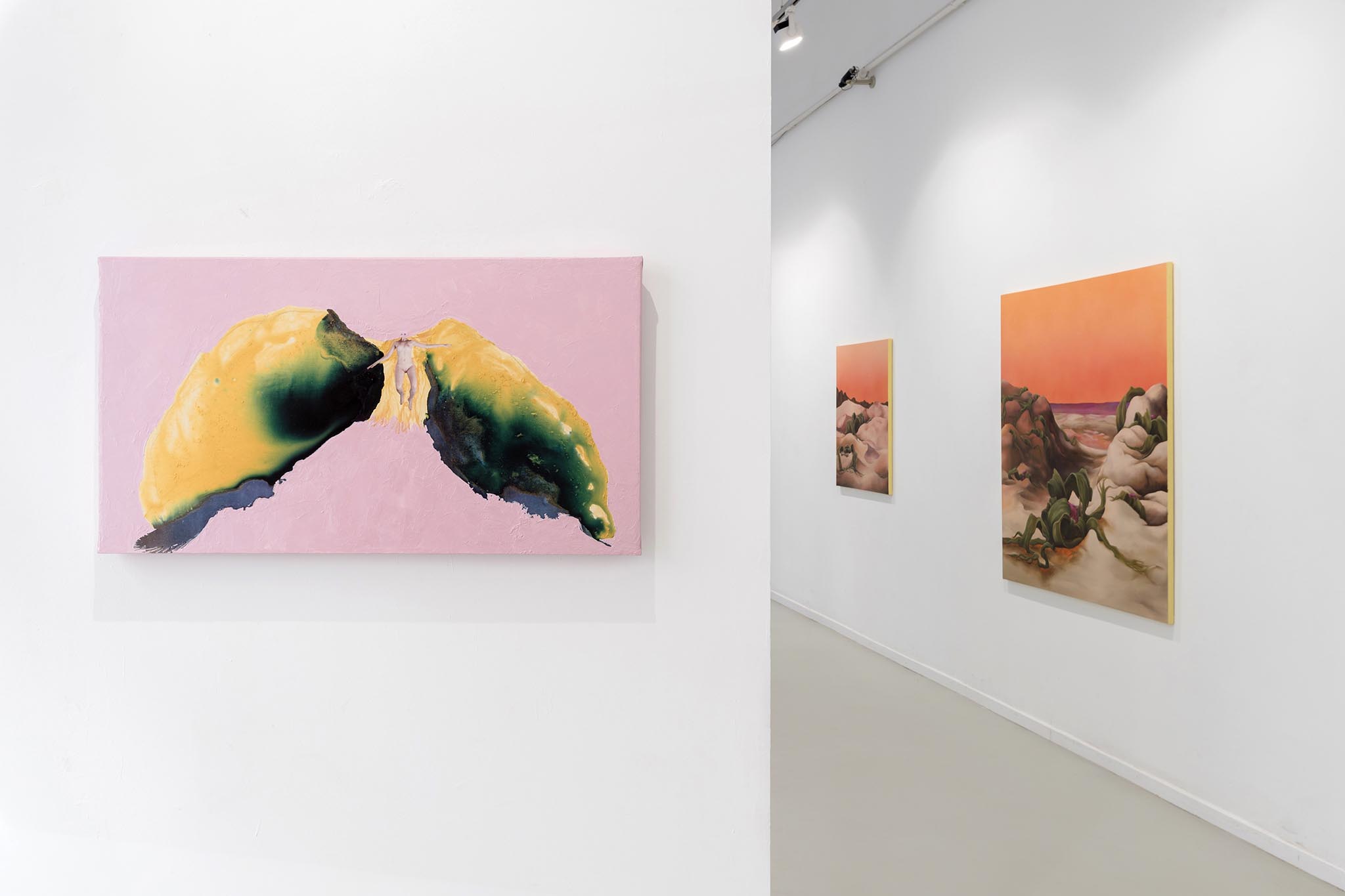

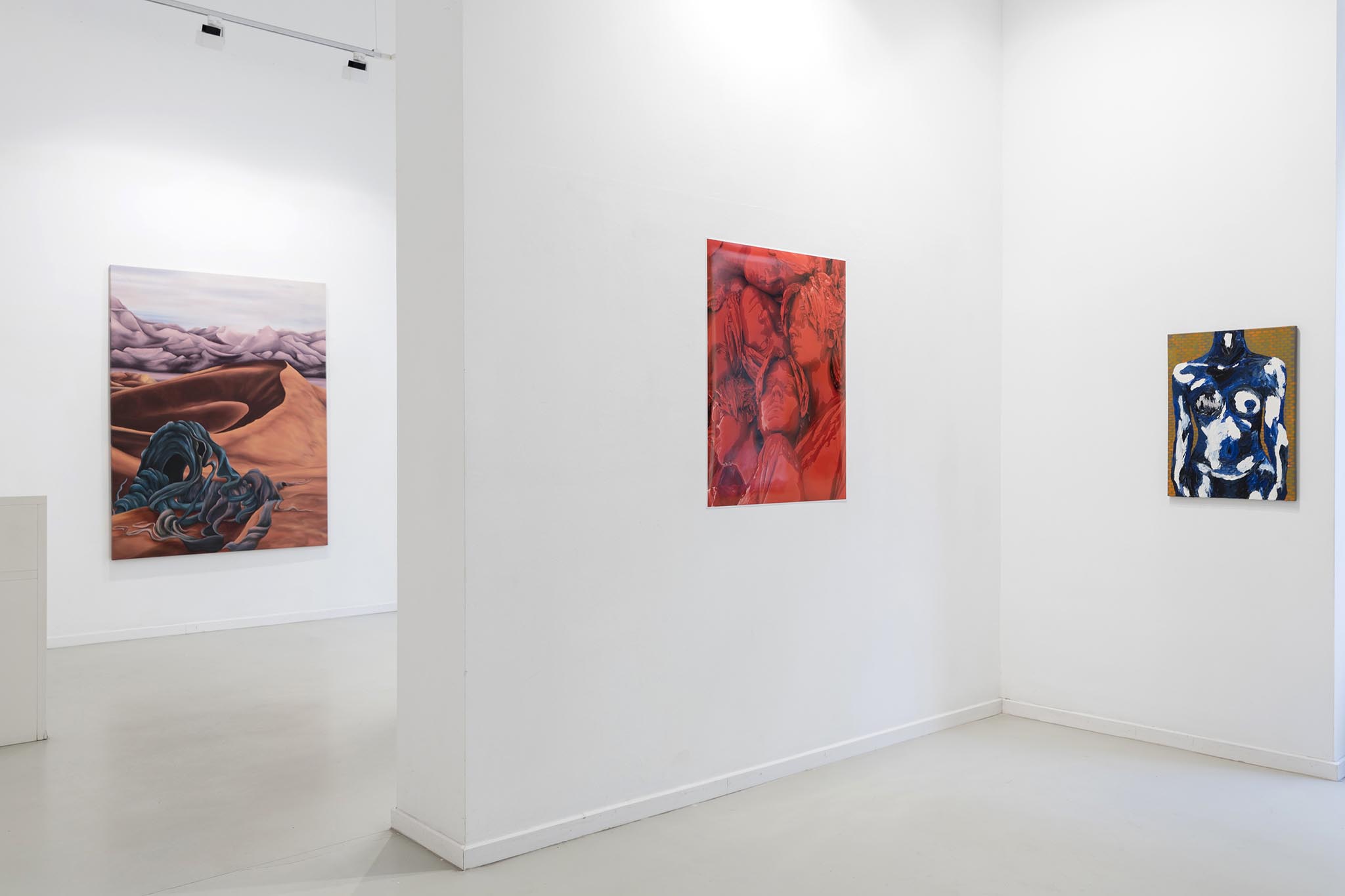
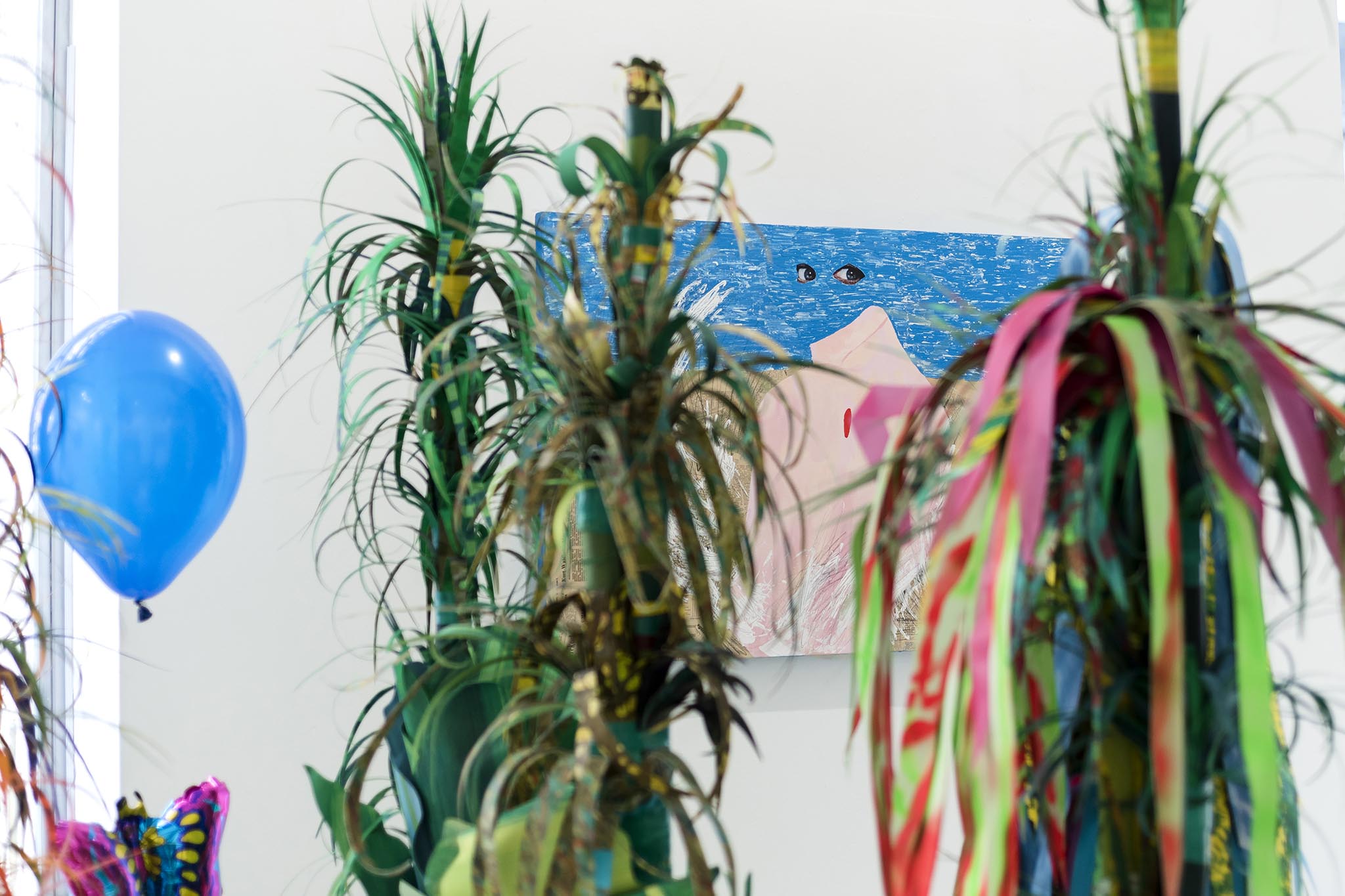
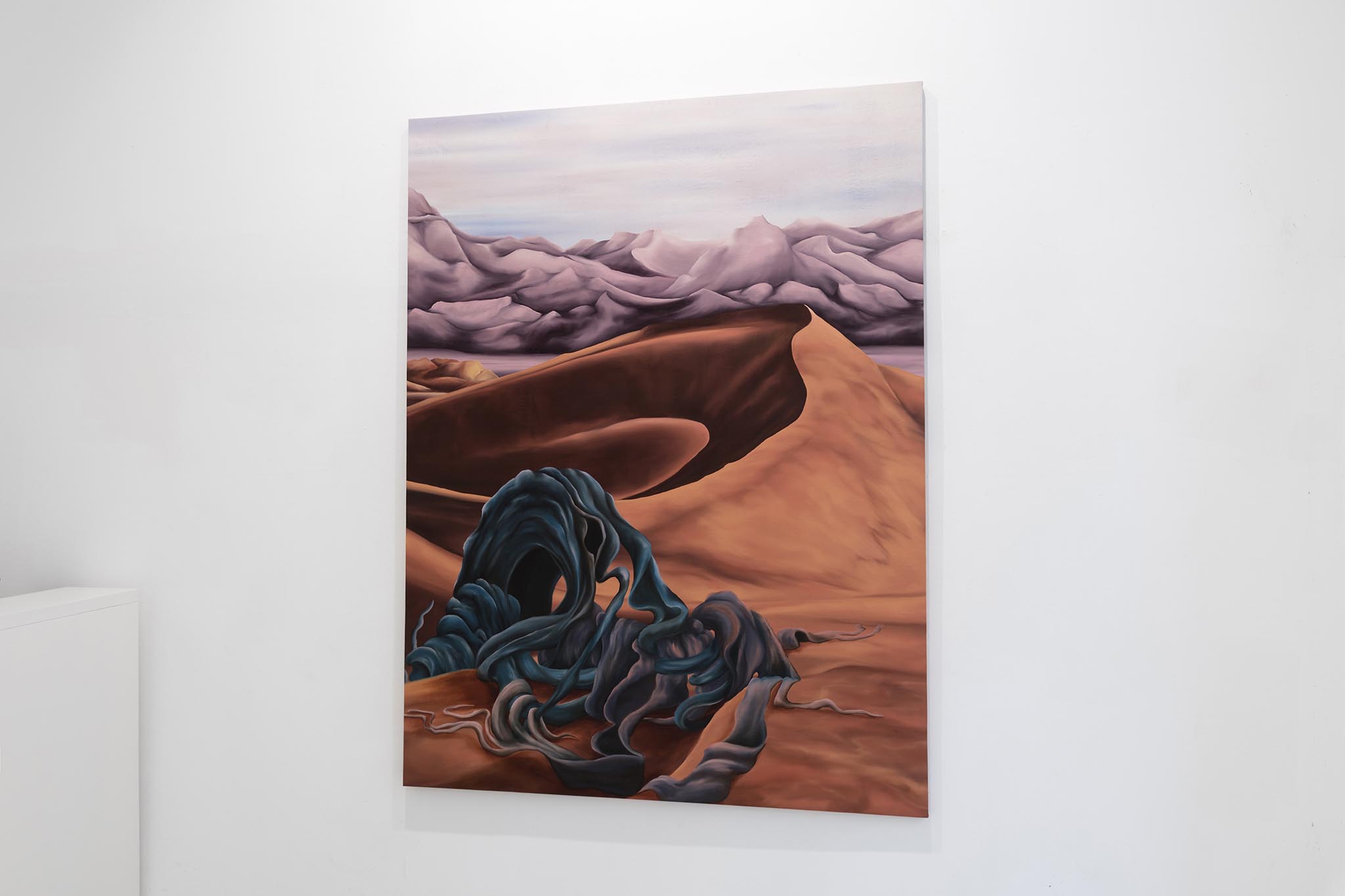

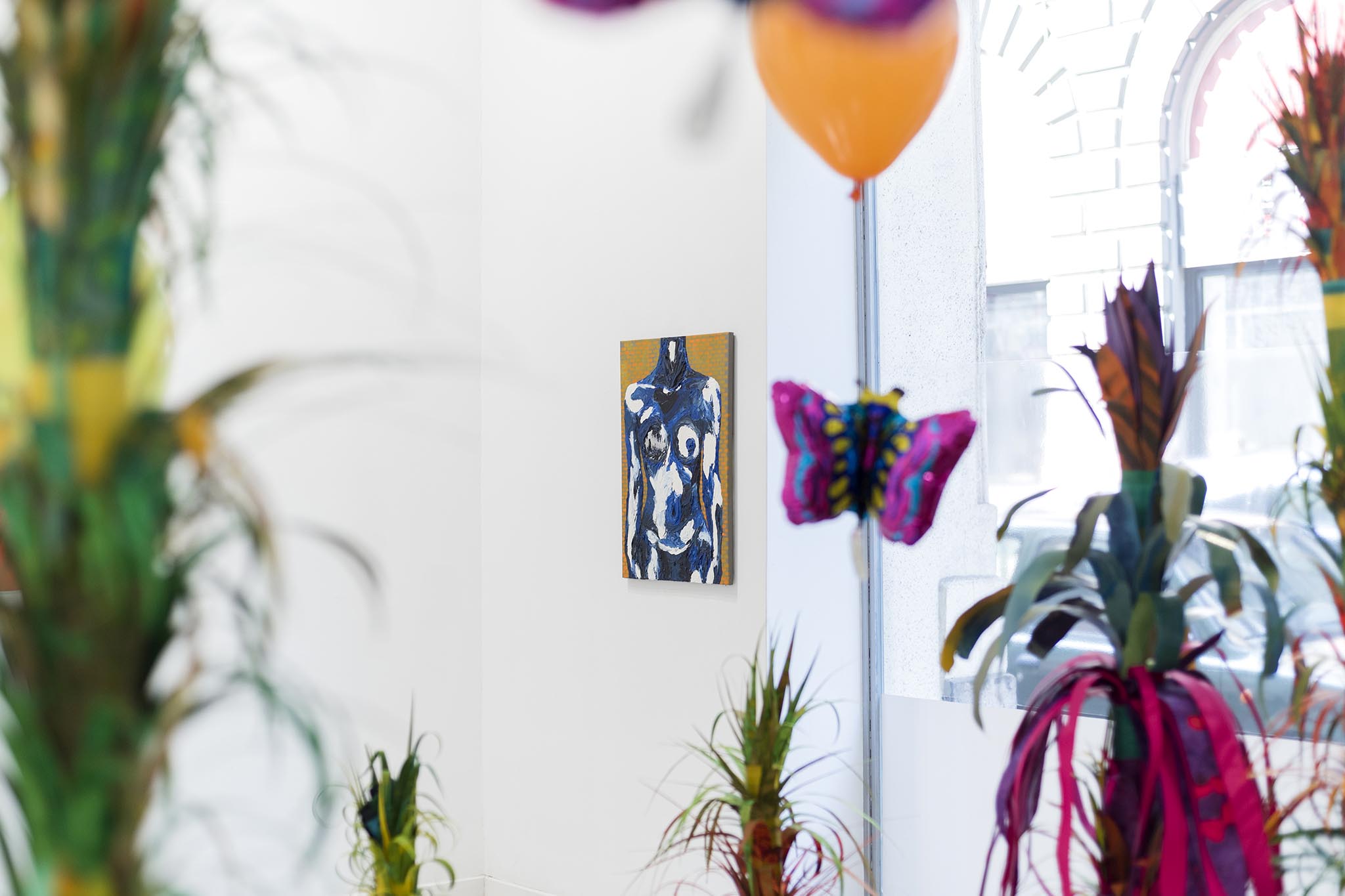
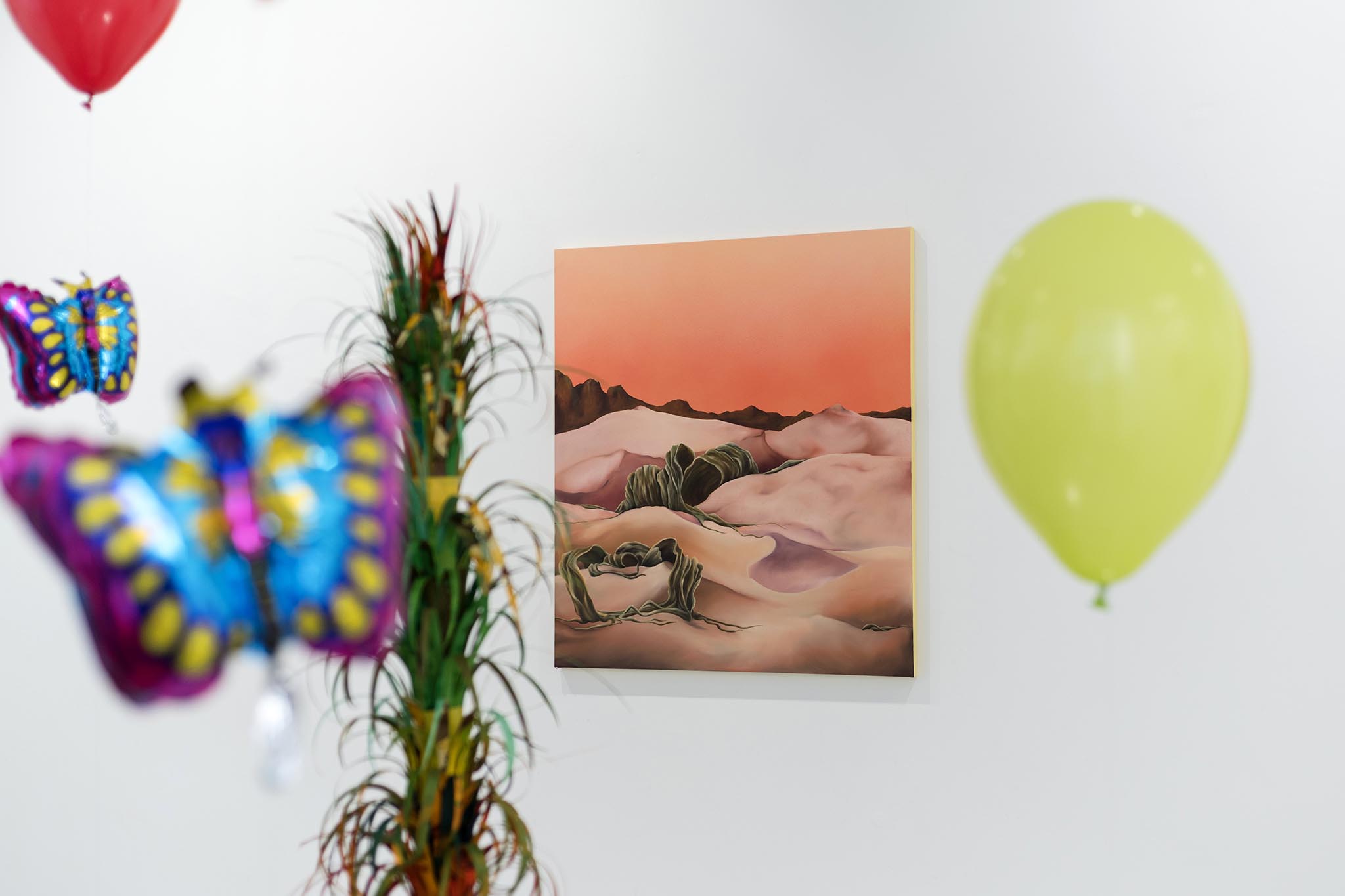
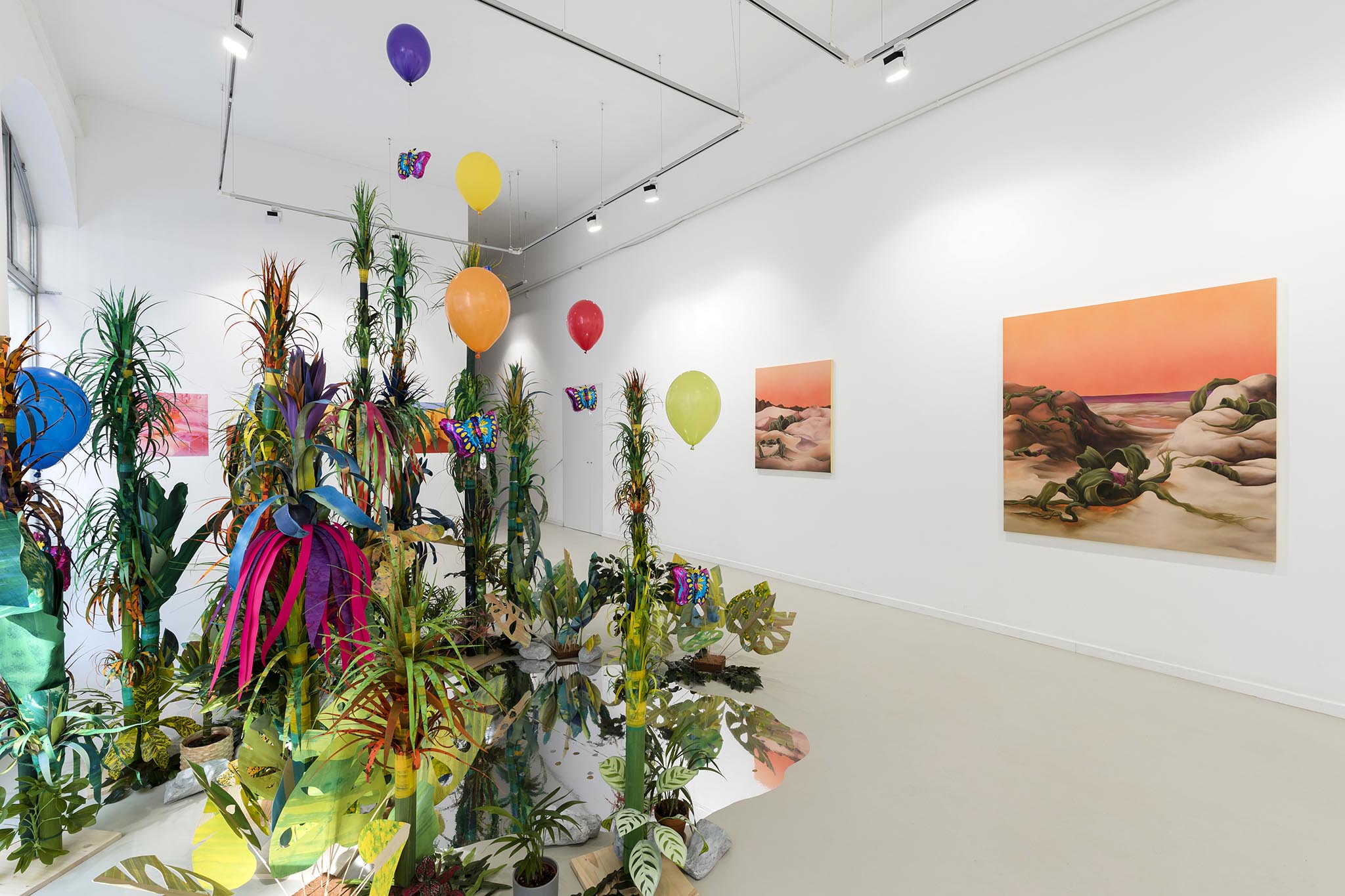
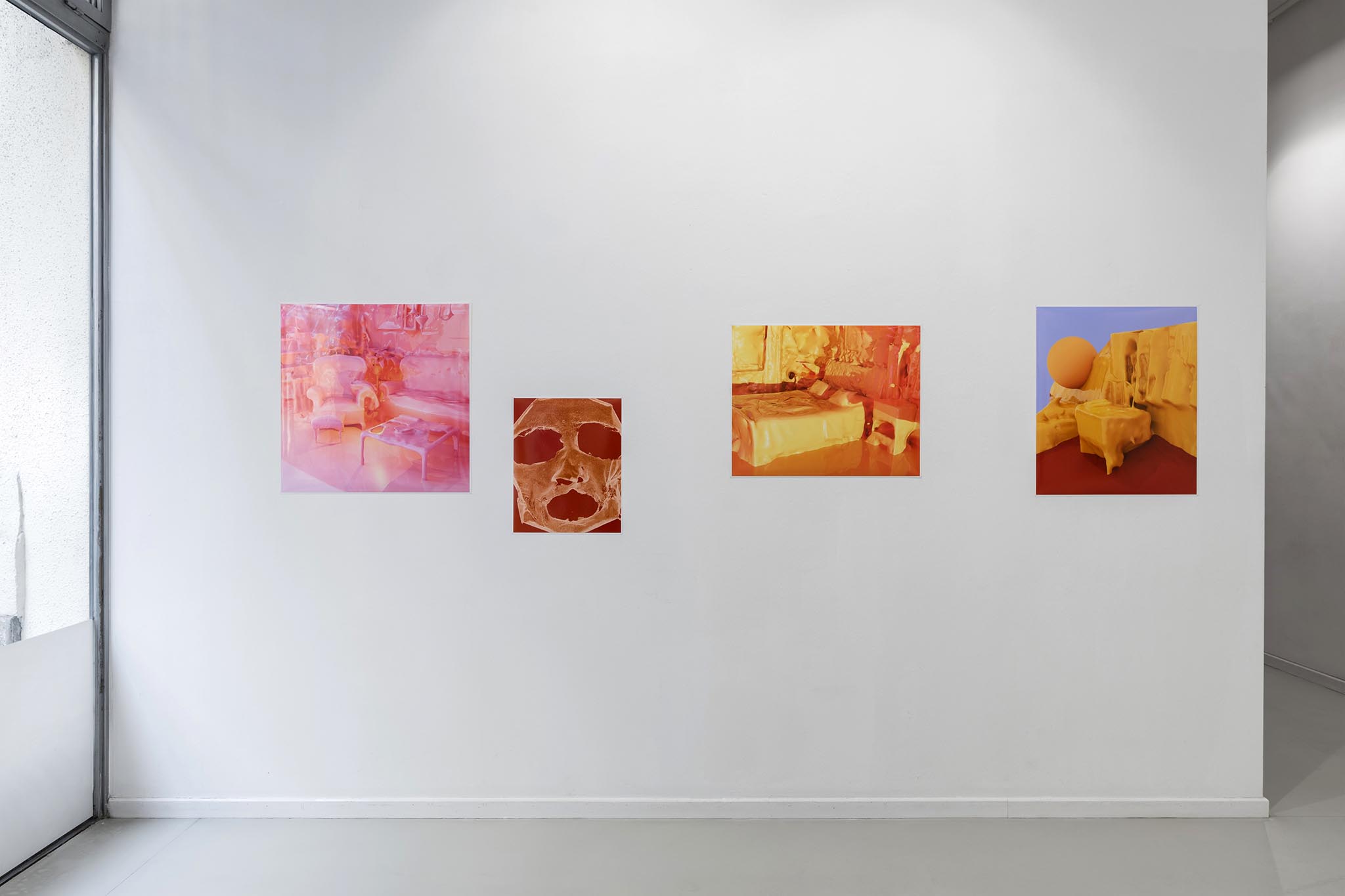
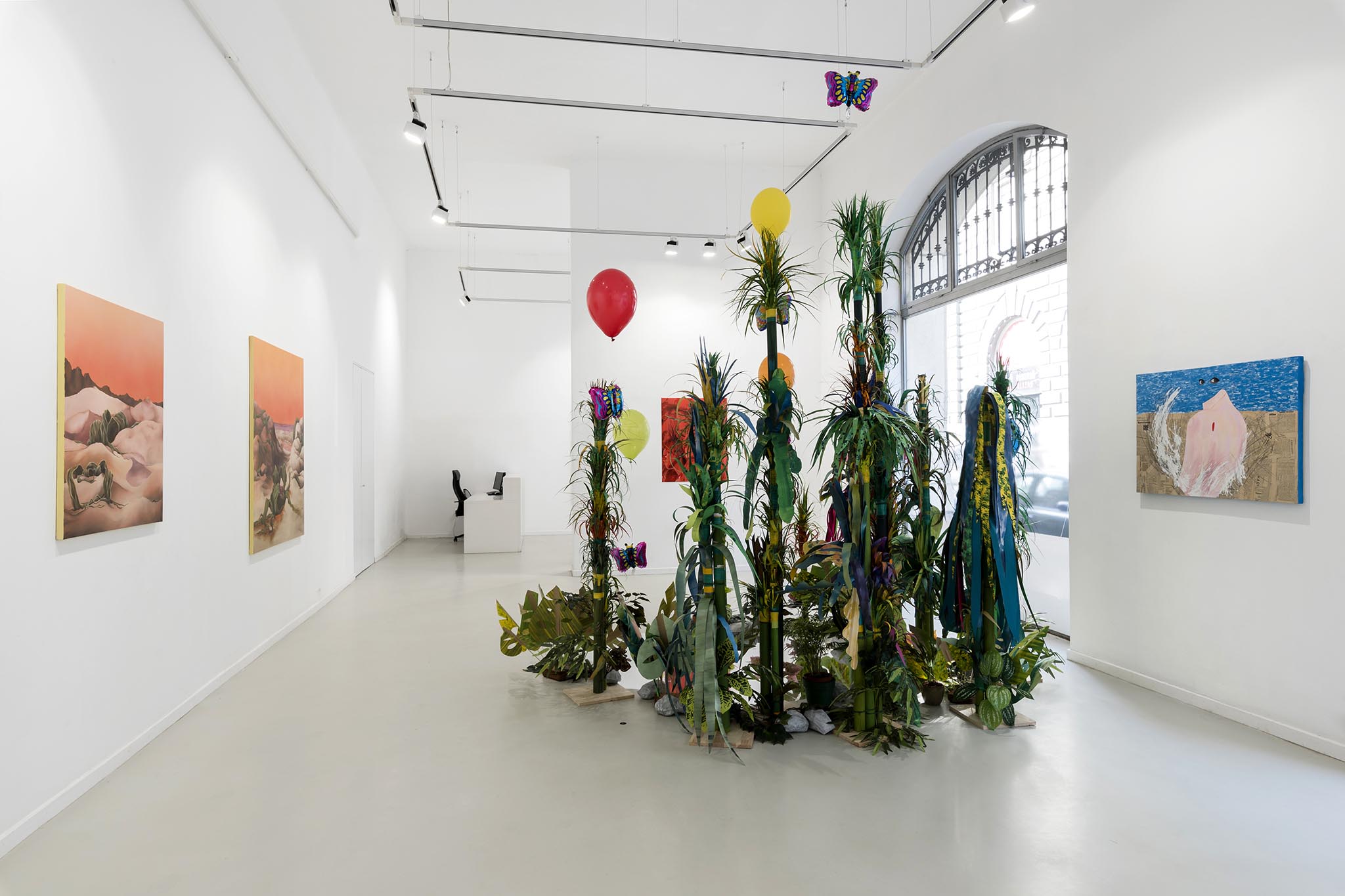


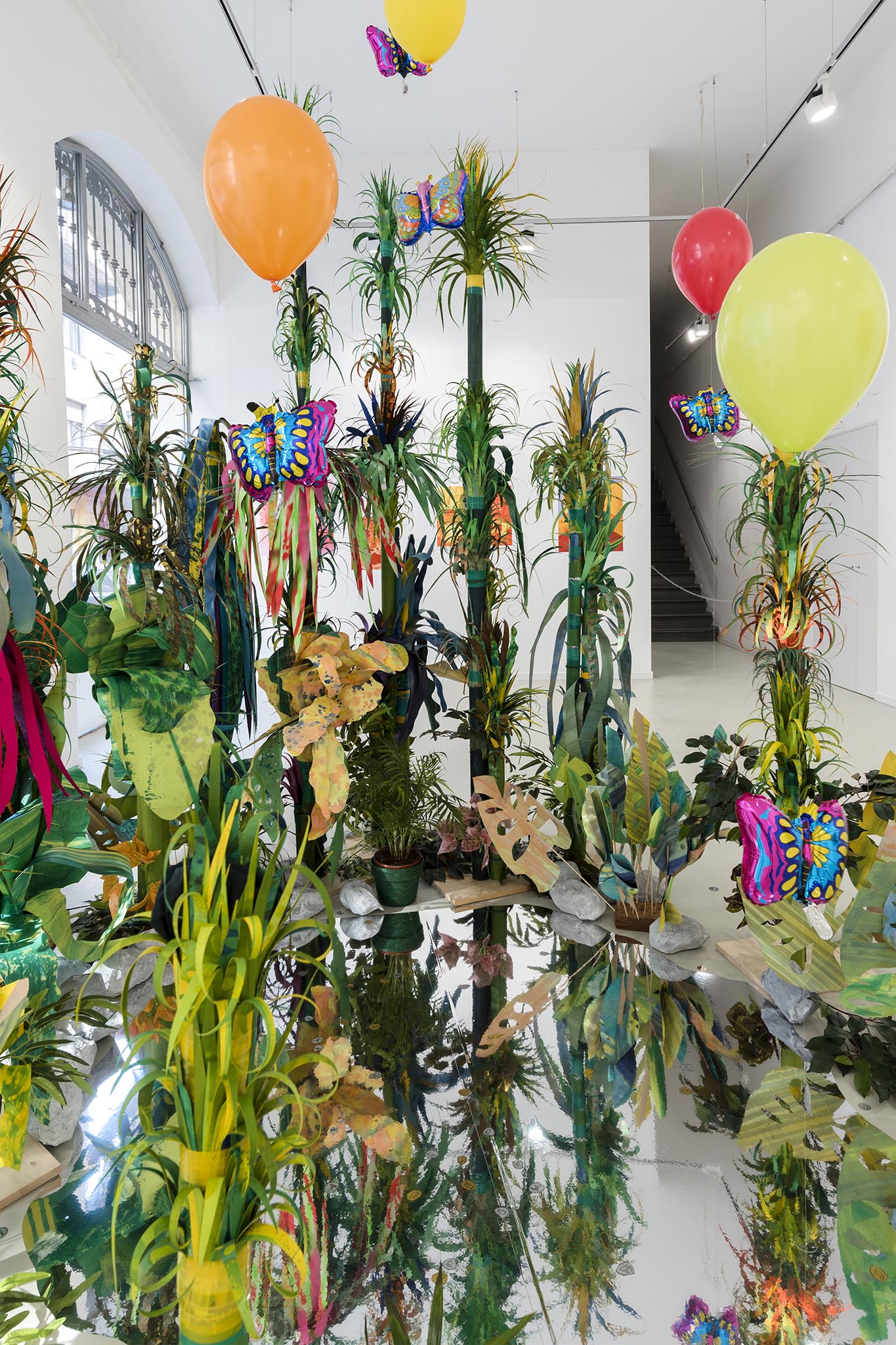
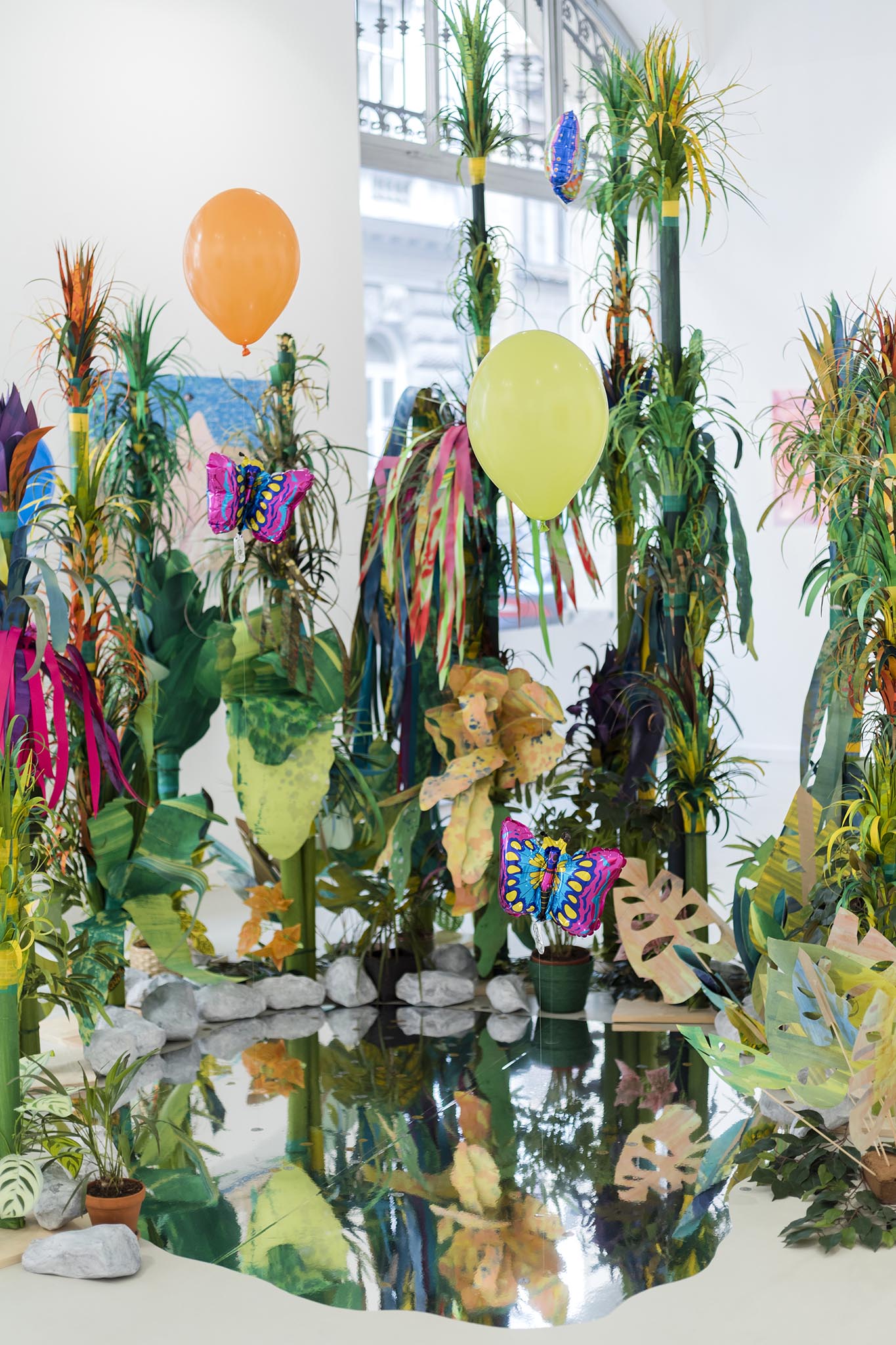

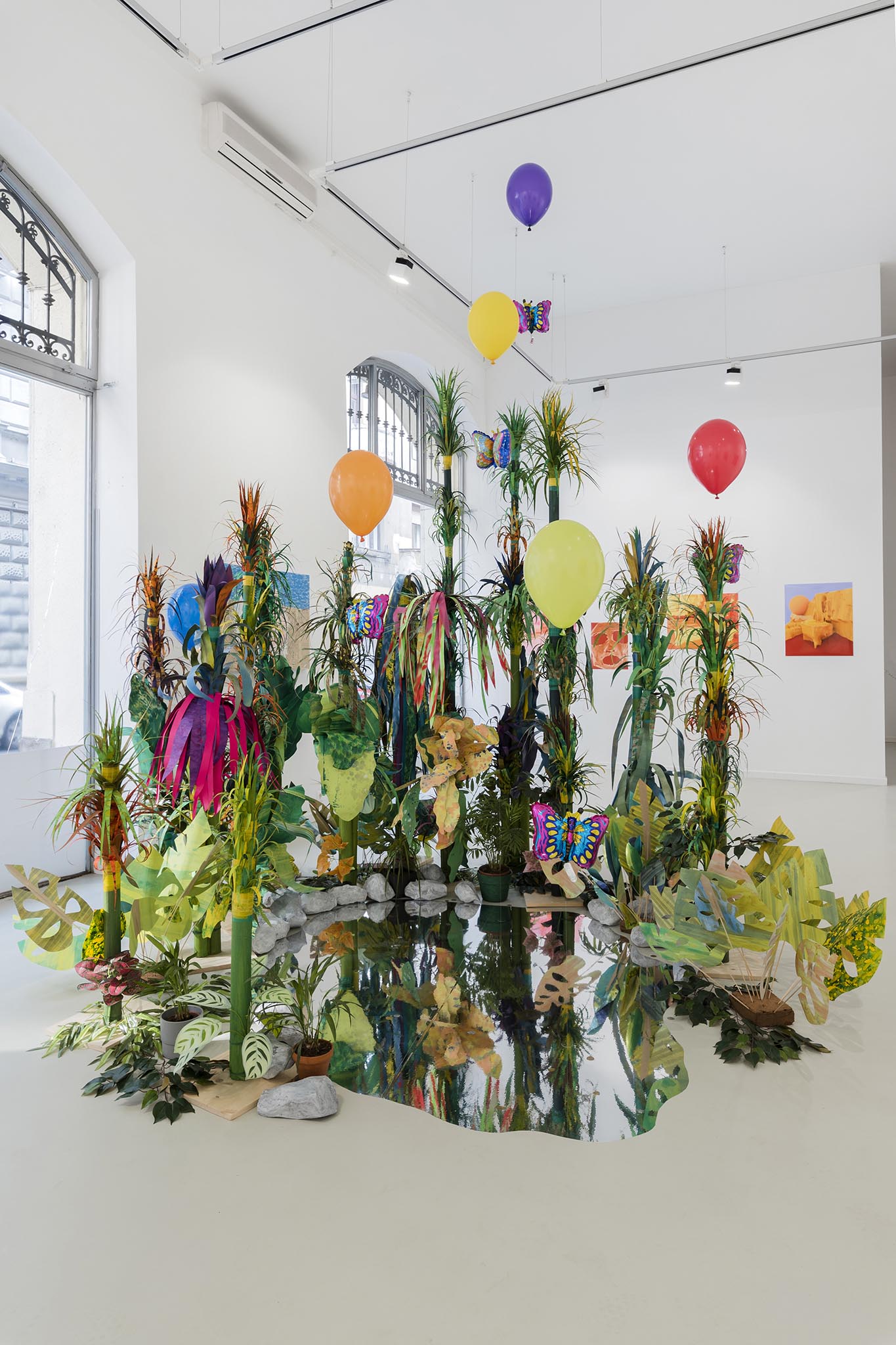

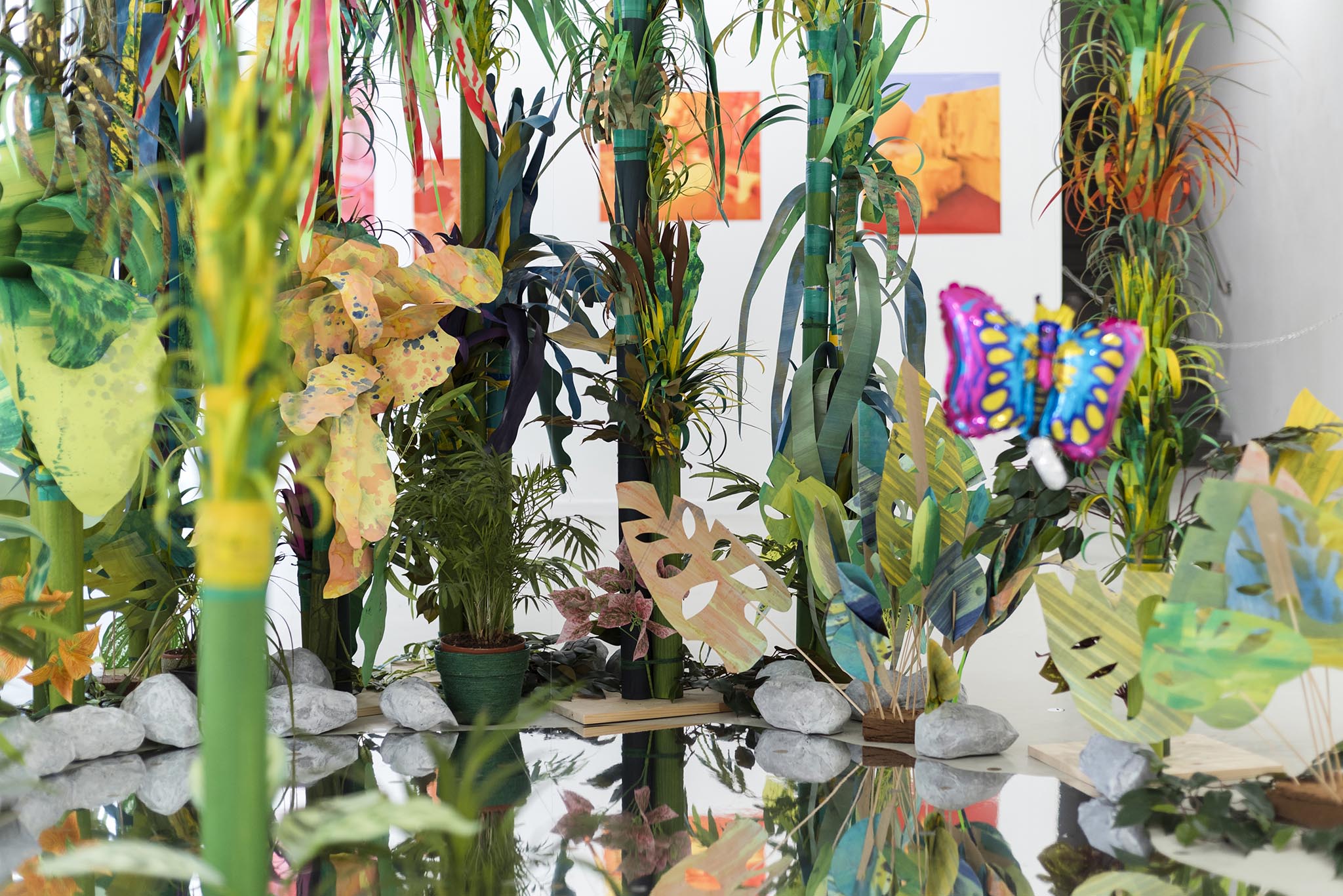
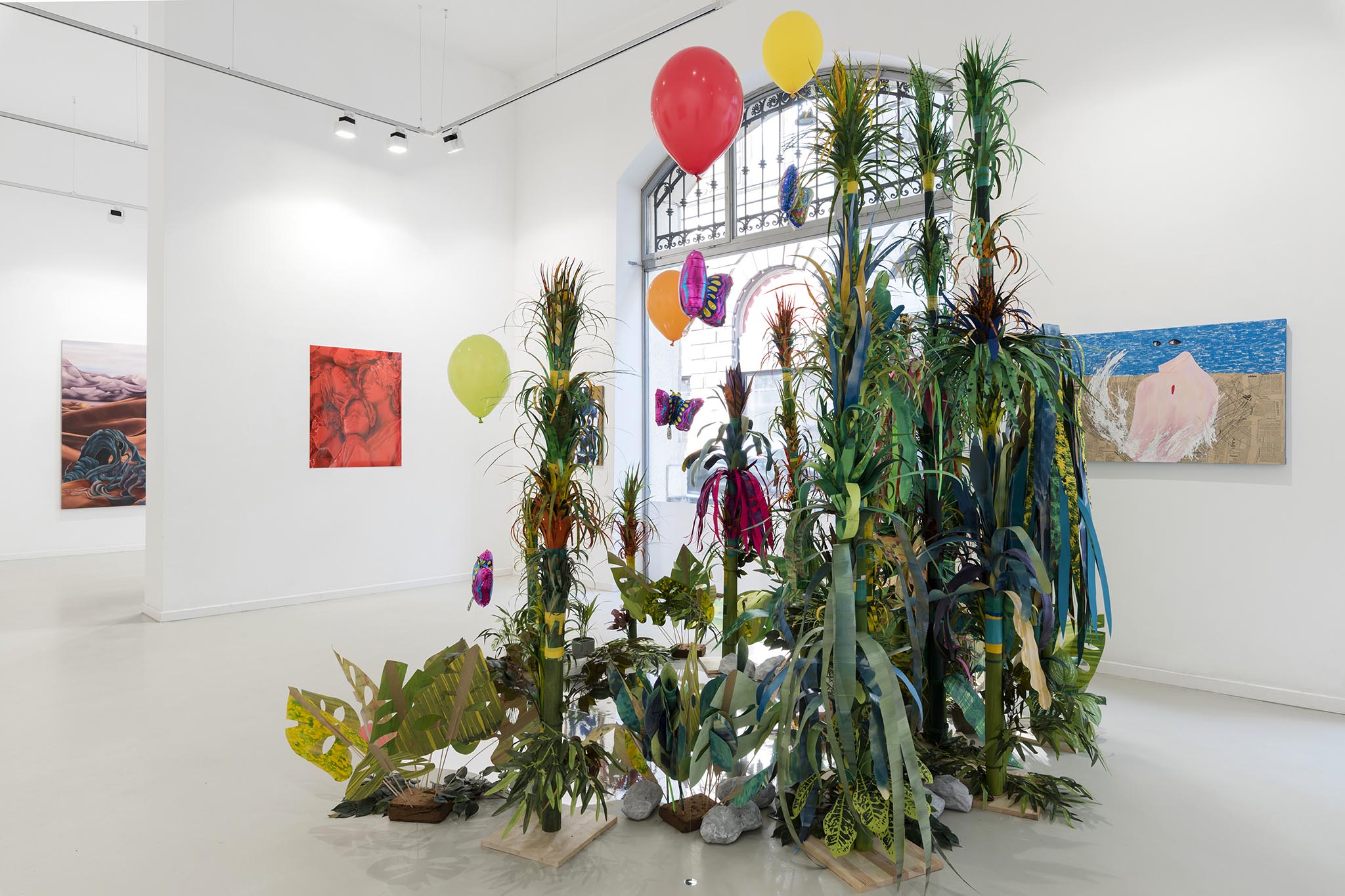
Sometimes I Flow with the Ocean
Viktória Kalán | Mónika Kárándi | Hanna Rédling | Marina Sztefanu
The upcoming exhibition in the Erika Deák Gallery, Sometimes I Flow with the Ocean will introduce four emerging artists and their newest works to the public. The gallery space will turn into a magical and futuristic garden for a few weeks, where the bare desert of David Lynch’s Dune merges with the lust of green paradise. A lonely female body meets with a sweltering flower thread, the atmosphere enfolds into fantasy, a vague dream. The title of the exhibition reflects on contemporary realities that has no future, but also refers to a smooth ensemble of longing and nostalgia. Some essential attributes of our past disappear in front of our eyes and become memories, and we keep struggling to preserve the life we have known before. The pandemic has forced us to retreat, to rethink, but in the meantime it also shows that at times it is possible to slow down, step back and simply immerse. The exhibited artists reflect differently on the propositions of the present – on one hand, the idyllic image of nature appears on their artworks together with its one-time and unrepeatable innocence, and on the other hand they refer to the uncertainty of the man-made environment, the manipulability of the world, the artistic subject and identity.
Viktória Kalán (1993) depicts the female body with strong colors and expressive brush strokes on her paintings. Strong narratives, questions of desire, life and death emerge as she turns paint into a body, an object of our desires. Her images are as much erotic as painful, and suggest a continuous flux of time. She visits and reinterprets important icons of our past, or sometimes she chooses a model from her direct environment. She articulates the image of a longing woman looking for a place in the world over and over again, while also attempting to combine panel painting with collage techniques.
Mónika Kárándi (1990) has been using the same system of motifs for some years, that reveal a vision of an utopian landscape and nature. While in her prevoius paintings the emphasis was on the symbiosis arising from the connection of melancholy, plants and natural forms, her latest works feature a dialectic of the living and the inanimate, and a specific concept of nature. The unity of the desert, sometimes seemingly anthropomorphic landscapes are broken by tendrils, proliferating leaves, and biomorphic connections that penetrate the interior of the image. By constructing this particularly intimate worldview, Kárándi makes visible an elementary desire that takes place between the foundations of the events of everyday life and their symbolic and metaphorical formulation.
Hanna Rédling (1993) uses the tool of photography to deal with the dilemmas of broken reality, the sense of existence associated with the uncertainty of the present, and the increasingly digital/virtual world. In addition to classic photography, she has been using 3D imaging techniques recently to give the space an exciting, soft texture. The fragmentation created during scanning and the resulting draining, gel-plastic space complex suggest that the differences between the past and the future disappear. Her work is a sensitive answer to the increasingly frequent questions of where today is the boundary between virtual and real life, and where we place it, how we feel about it ourselves.
Marina Sztefanu (1991) has been focusing on installations in recent years. Using a variety of ephemeral, simple and easy-to-shape materials, she creates and designs her sometimes monumental and sometimes distinctly soft and model-like constructions. In her works, great emphasis is placed on creating a special atmosphere, behind which a mysterious plot imbued with symbols and rituals emerges. In her work presented at the Erika Deák Gallery, she attempts to reinterpret an oasis, where a centralized lake appears as a kind of mini-sanctuary. She is referring to the well known tradition of throwing money in a water well in hope of returning to a desired place. In her interpretation, the articulation of the wish attached to it, and the naive and sincere faith in these lines of action become the scene of a new context.
If you have further questions, please contact the gallery via telephone or e-mail.
Virtual opening: February 19, 2021, Friday 4 PM
Opening speech by: Gábor Rieder, art historian
On view: February 18 - March 26, 2021